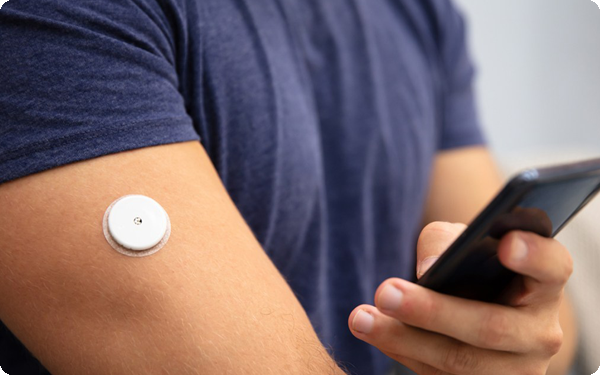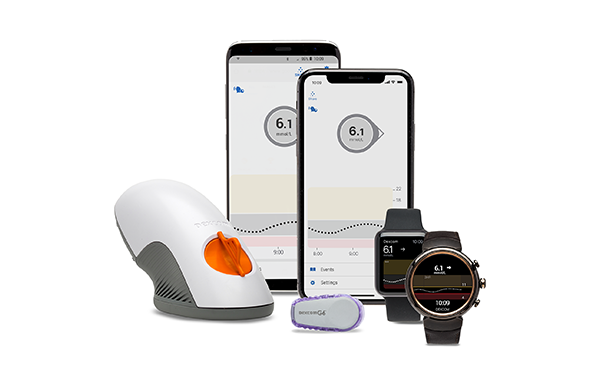Technology & Innovation – Glucose Monitoring Systems

Flash Glucose Systems (FGS) & Continuous Glucose Monitoring (CGM)
What is a flash glucose system?
A flash glucose monitoring system is an easy way for people with diabetes to check their glucose levels. It enables a person living with diabetes to check their own or their child’s glucose levels without a finger prick check. A sensor is a small device, usually worn on the back of your upper arm. The sensor measures the interstitial fluid under your skin and tracks changes in the glucose levels.
How does a flash glucose sensor work?
The sensor measures your interstitial glucose levels, which is the glucose found in the fluid between the cells. The person wearing the sensor, or a carer, will need to scan the sensor to find out what the current level is. The sensor needs to be scanned by a compatible mobile phone or hand set to see the current glucose information, this allows discrete monitoring of glucose levels. A finger prick check may still be needed, especially if the person with type 1 feels different to what the sensor is reading.

What is continuous glucose monitoring or CGM?
Continuous glucose monitoring is also known as CGM. This system automatically tracks glucose levels, throughout the day and night. You can see your glucose levels anytime at a glance, on your smartphone, smartwatch or monitor without any other checks. You can also review how your glucose changes over a few hours or days to see trends. Seeing glucose levels in real-time can help you make more informed decisions throughout the day about how to balance your food, physical activity, and medicines.
How does a continuous glucose monitor work?
A CGM works through a tiny sensor inserted under the skin of a person living with type 1 diabetes. It’s usually worn on your tummy or arm. The sensor measures your interstitial glucose levels, which is the glucose found in the fluid between the cells. The sensor tracks glucose every few minutes. A transmitter wirelessly sends the information to a monitor or compatible mobile device. A finger prick check may still be needed, especially if the person with type 1 feels different to what the sensor is reading.
The monitor may be part of an insulin pump or a separate device, which you might carry in a pocket or purse.

